The Moon Has a Secret Underground CAVE: Scientists Discover an Empty Lava Tunnel Beneath the Moon’s Surface — and Say It Could Be the Perfect Base for Future Colonists
NASA and Elon Musk’s SpaceX plan to send humans to the moon again later this decade.
But on the lunar surface, astronauts are exposed to potentially deadly cosmic radiation and extreme temperatures.
Scientists may now have found a suitable shelter to protect themselves from these harsh conditions.
Experts in Italy say they have identified the first cave on the moon. This cave is located in a pit in the Sea of Tranquility.
It could be a promising location for a lunar base, as it offers shelter from “the harsh conditions on Earth’s surface” and could support long-term human exploration of the moon.
The cave extends from inside the Mare Tranquillitatis Pit (pictured), which is located on the moon’s famous Sea of Tranquility – close to where humans landed in 1969
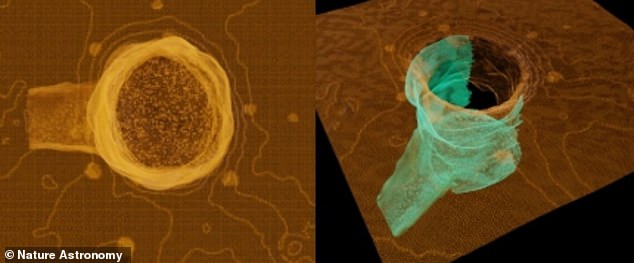
The pit leads to a “lava tube” – a natural passage through which molten lava once flowed – that could house astronauts
“These caves have been speculated about for more than 50 years, but this is the first time we have been able to demonstrate their existence,” said Lorenzo Bruzzone, head of the study and a professor at the University of Trento in Italy.
Since the first pits on the moon were discovered in 2009 by JAXA’s SELENE spacecraft, scientists have wondered whether they lead to caves that could be explored or used as shelters.
There are more than 200 pits on the Moon, 16 of which are believed to be collapsed “lava tubes”: natural channels through which molten lava once flowed.
When the ceiling of a solidified lava tube collapses, a pit is created. Whether these pits provide access to caves has long been uncertain.
The team focused on a roughly cylindrical pit in a part of the moon’s northern hemisphere known as the Sea of Tranquility, or Mare Tranquillitatis.
Tranquility Base, the site of the first manned landing on the moon in July 1969, is located in the southwestern corner of the Sea of Tranquility.
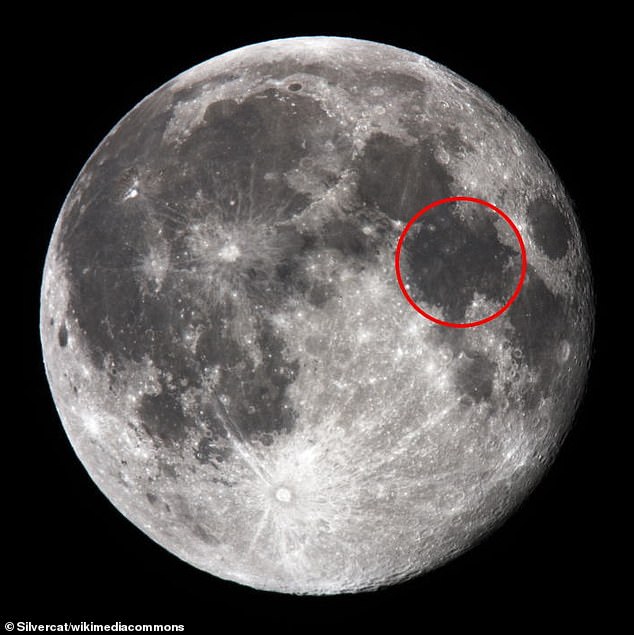
Researchers focused on a roughly cylindrical, 100-meter-deep depression, about as long and wide as a football field, in a region of the moon known as the Sea of Tranquility or Mare Tranquillitatis (marked here with a red circle).
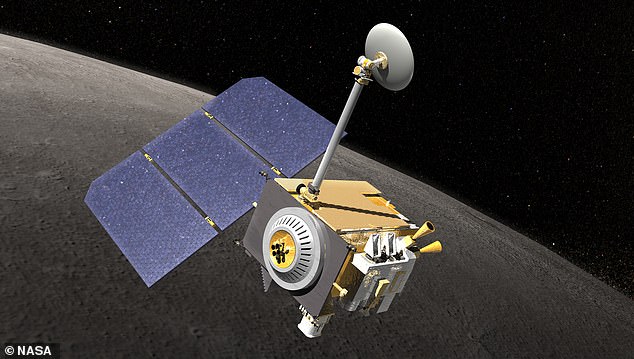
Researchers processed images from the Diviner Lunar Radiometer Experiment, a thermal camera on NASA’s robotic Lunar Reconnaissance Orbiter (pictured here in space)
Mare Tranquillitatis Pit is the deepest known pit on the moon – an estimated 328 feet (100 meters) deep and up to 377 feet (115 meters) wide – about the length of a football field.
NASA’s Lunar Reconnaissance Orbiter, launched in 2009, collected radar data from the pit during a flyover more than a decade ago.
But the team has now reanalysed the radar data using new ‘complex signal processing techniques’.
According to the findings, some of the radar reflections from the well can be identified as an “underground cave tube tens of meters long.”
“Thanks to the analysis of the data we were able to create a model of part of the pipeline,” said Leonardo Carrer, a researcher at the University of Trento.
‘(We) have detected radar reflections in the area of the well that can best be explained by an underground cave conduit.
“This discovery is the first direct evidence for the existence of an accessible lava tube beneath the lunar surface.”
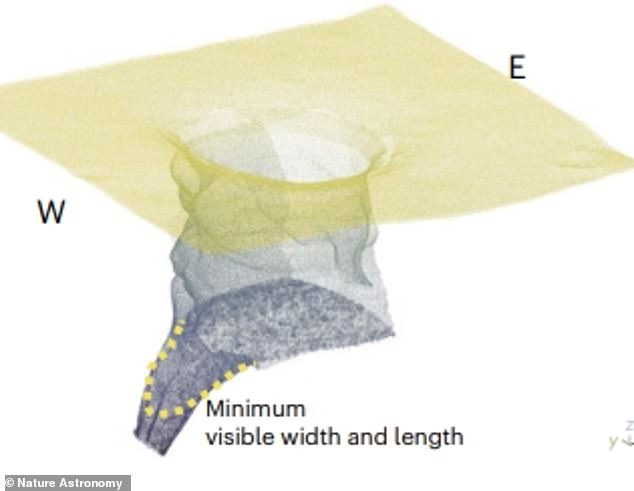
In the photo the researchers’ illustration of the shape of the cave descending from the Mare Tranquillitatis well
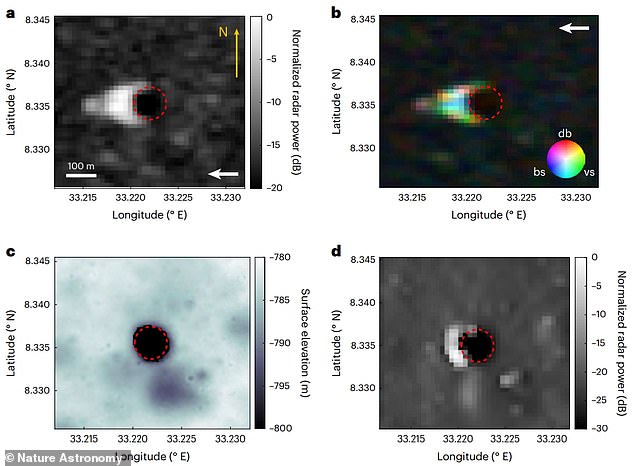
NASA’s Lunar Reconnaissance Orbiter, which launched in 2009, captured radar data of the pit during a flyover more than a decade ago. But the team has now reanalyzed the radar data using new “complex signal processing techniques”
This new research has implications for the development of missions to the Moon, where the environment is hostile to human life.
The Moon is known for temperatures that are too extreme to support life: during the day it can be scorching hot (120°C) and at night it can be icy cold (-140°C).
But temperatures in a shaded cave like this are thought to be a ‘comfortable’ 17°C, suggesting they could be the perfect locations for lunar base camps.
They could also provide protection against cosmic rays and the thousands of meteorites that are believed to hit the moon each year.
It also opens up the possibility of other lunar grooves leading to caves, giving space explorers more options when planning settlements.
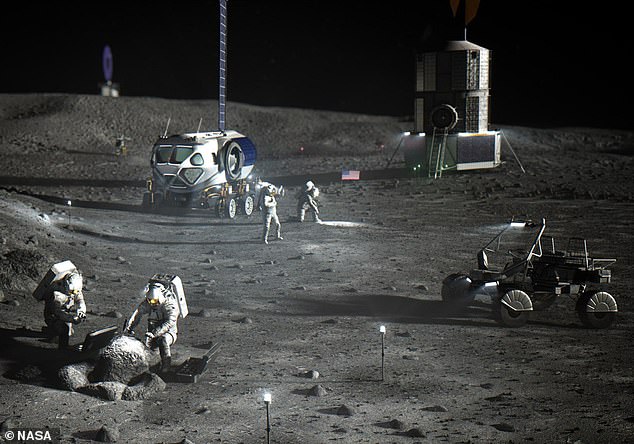
NASA hopes to develop a sustainable lunar exploration program starting in 2028. This artist’s illustration shows what NASA’s Artemis base camp might look like
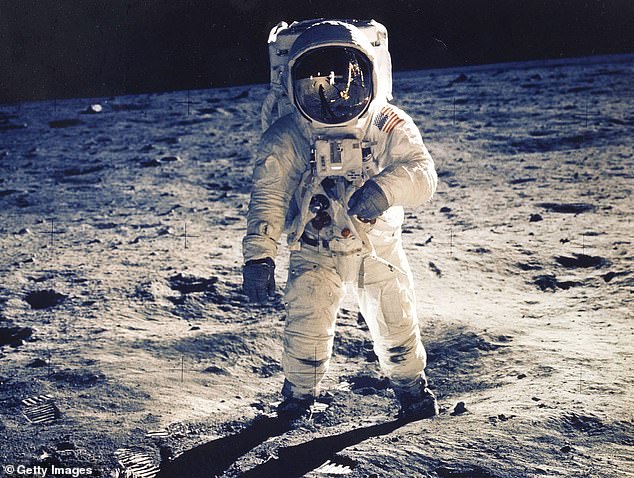
Tranquility Base, the site of the first manned landing on the moon in July 1969, is located in the southwest corner of the Sea of Tranquility. Pictured is Buzz Aldrin during the Apollo 11 moon landing on July 20, 1969
Instead of heading to the Sea of Tranquility, NASA’s upcoming Artemis III mission is planned to land a crew in a SpaceX craft in the moon’s south polar region.
As part of the Artemis program, NASA plans to establish a base camp on the southern part of the moon by the end of this decade.
Building a lunar base in a pit or cave is not currently part of the official plan, but the study’s authors suggest it may be worth considering in the future.
“A complete survey of all known lunar quarries would allow us to identify the most promising access routes for subsurface exploration of the Moon and provide information on the possibility of installing a human lunar base in environments protected from cosmic radiation and with stable temperatures,” they conclude.
Their new study is published today in the journal Nature Astronomy.
